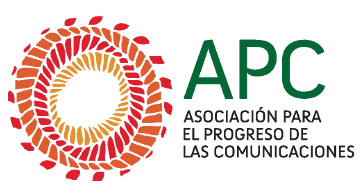Publicado el
Actualizado por última vez en
"Whatever is the state of localisation in India, the government is definitely responsible for framing the policies. We have dreams of software superpowerdom, yet basic tools are not in place. They have spent crores (tens of millions by Government of India organisations) CDAC and TDIL, and that too all in the name of undertaking work in Indic computing and benefitting the people," says Ravikant of New Delhi, who has been closely keeping track of Free Software localisation efforts in India.
Clearly the most impassioned speech of the entire event came from former college lecturer Ravikant (37) of New Delhi’s
Sarai.net network. The bearded slim Indian who is known for his passionate campaigns on Indian language computing was
fortright in his criticism.
"Whatever is the state of localisation in India, the government is definitely responsible for framing the policies. We have dreams of software superpowerdom, yet basic tools are not in place. They have spent crores (tens of millions by Government of India organisations) CDAC and TDIL, and that too all in the name of undertaking work in Indic computing and benefitting the people," he says.
But what’s the reality in his view?
"Not a single tool they (the government-linked initiatives) built have been used by the people. They’ve been thrown in the dustbin."
He sees it as all so "sterile and elitist". He adds: "People in charge don’t seem to care a damn about Indian lanuages. They don’t care anything about vernaculars. They remain as colonial as could be. They see computers as a priviledge, just as telephone was seen as a priviledge once on a time. They spread a fear of technology in the masses, with their ‘don’t touch it’ attitude."
Ravikant sees this as part of ‘cultural politics’. He sees a parallel in the attempt to build a stiltified form of the Hindi language, which then turned out to be highly artificial. Not people-centric, or based on their needs.
Says he: "We have a very committed set of volunteers of IndLinux (the network working to promote Indian language computing on the GNU/Linux front), who symbolise a desire to do things that are ungeeky, unfashionable, tough, and thankless."
He criticises Indian government organisations for wanting to earn out of selling Indian language fonts. This resulted in a situation where every website had its own differing fonts, and there was no compatibility between different ones. So, one had to download and install fonts for every different website one visited. A ludicrous position indeed.
Instead, he points to intiatives such as Devanagari.net, created by humble individuals.
"Volunteers from different parts of India picked up on the work and they started translating. Localisation doesn’t, of course, mean translation alone. There are also rendering issues, and keyboard issues," he adds. At the moment there are solutions for languages such as Bangla (Ankur project), Gujarati, Tamil, Telugu, Marathi, Malayalam and Urdu.
"IndLinux is a hydraheaded thing. It doesn’t even have an office or a physical presence. It’s just coordinated across India via the internet. We hope to collaborate a lot with Pakistan," he adds.
He pointed with pride to the fact that "somebody sitting in the US" — an expat India — had worked to create an Indian
language Unicode-based solution for a number of Indian languages, called the Padma solution. This means one can use the Mozilla browser to visit a number of different Indian websites, without the earlier multiple hassles.
"Hindi is technically workable. We have an email client, a browser, office tools and more. We need to refine spell-checkers, dictionaries, etc. Now the corporate world is waking up to the situation. We also have to stand up for the smaller languages (where localisation isn’t or otherwise won’t happen)," he says.
But, above all, he feels that until Indian language computing finds its users, it would remain a "beautiful failure".


